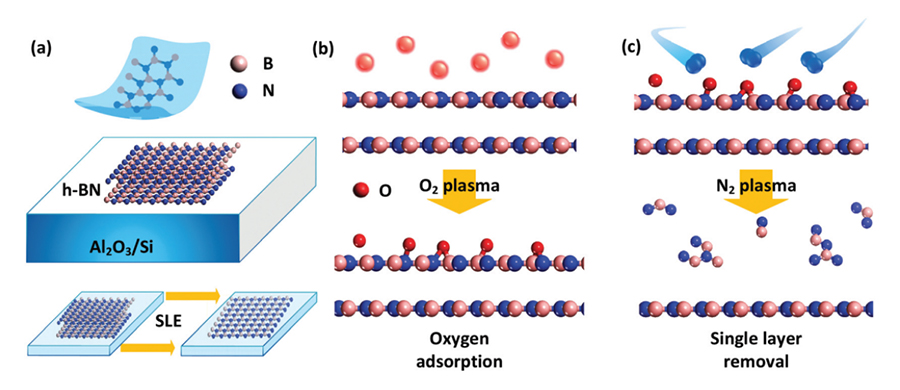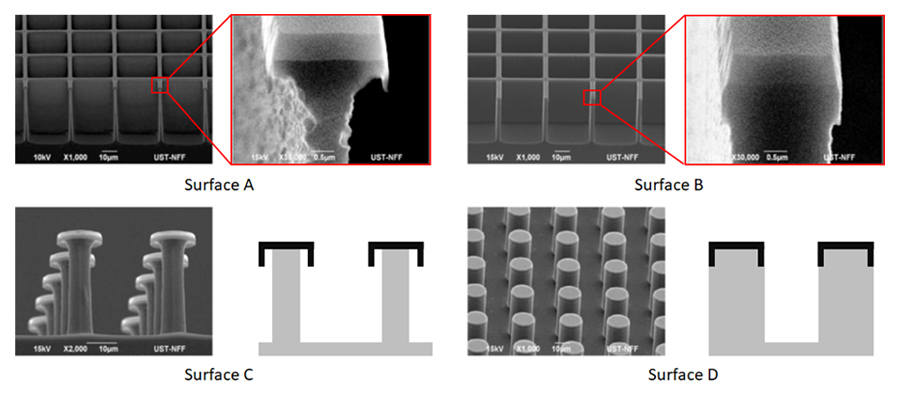Publication Highlights
NFF user Zichao MA’s paper “Control of hexagonal boron nitride dielectric thickness by single layer etching” was featured as the Back-Cover Article of the Journal of Materials Chemistry C, published by the Royal Society of Chemistry in June 2019. Zichao MA is supervised by Prof. Mansun CHAN.
This work demonstrates a layer-by-layer etching technique to control the hexagonal boron nitride (h-BN) film thickness with single layer precision. The method involves top-layer h-BN deformation via oxygen-radical adsorption and then top-layer removal by nitrogen-ion bombardment. An ultimate monolayer h-BN with a smooth surface can be obtained from a thick flake by using the method repeatedly. Characterization of the dielectric properties of a thickness-reduced h-BN film shows a desirable low leakage current, large capacitance and high breakdown field properties as a gate dielectric material.

NFF user Dong LIAO’s paper “High-performance icephobic droplet rebound surface with nanoscaled doubly reentrant structure” was published in the International Journal of Heat and Mass Transfer in December 2018. Dong LIAO is supervised by Prof. Huihe QIU.
Novel micro/nano fabrication techniques were developed for fabricating 15 µm doubly reentrant microcavities, which is the smallest in the world. Static and dynamic wetting experiments were conducted on pillared, doubly reentrant, cavity and the newly developed surfaces under different surface temperatures. It is found that the newly fabricated surface has the shortest contact time in comparison with other superhydrophobic surfaces, which depressed the ice nucleation on the surface below freezing temperature and, therefore, enhance the ability of icephobic. The experimental results show that the newly developed surface also can repel droplets with an impact Weber number as high as 103 under a room temperature condition, which is twice higher than previous research.
